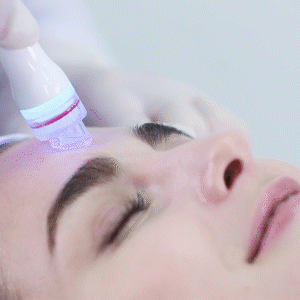Dermabrasion, Hydradermabrasion & Microdermabrasion. What are they and which one is right for me?
Your skin is a fascinating organ. It consists of three layers, the epidermis, dermis and subcutis protect against germs, regulate body temperature and enable touch (tactile) sensations. It also covers your entire body, so it’s no wonder why women in the UK spend £10 billion every year on products to either clean, detail or enhance their skin.
In order to protect you as effectively as possible, your skin is constantly repairing itself and replacing old skin with new skin. This process isn’t perfect however, and the epidermis (outer layer) can be left with dead skin cells, acne, sun damage and more. Because of this, many people turn to various types of dermabrasion to resurface their epidermis.
Dermabrasion
Dermabrasion is a cosmetic skin-resurfacing procedure which involves blasting areas of the skin with an abrasive material, typically artificial sand, in order to remove the outer layer of the epidermis. This is usually done to remove something on the skin, including:
- Sun spots
- Scarring
- Acne scars
- Persistent redness
The skin that grows back after the outer layer is removed is usually smoother than the original skin, improving its appearance.
Dermabrasion is the most intense of the three procedures, and is usually used to remove a skin flaw permanently. It can usually only be performed by a doctor, plastic surgeon, or medical specialist. The procedure involves the patient being given local anesthetics to numb the area, and leaves skin sore and red for several weeks. It can take up to three months for your skin tone to return to normal.
Microdermabrasion
Microdermabrasion is a considerably more gentle form of dermabrasion. It isn’t used for skin flaws that are as serious as those treated by dermabrasion, but rather as a method of temporarily removing dead skin cells, dry skin, or minor damage, and affects only the most superficial layer of the skin, the stratum corneum. While not removing flaws like sun spots, acne scars or wrinkles completely, it can dramatically improve the appearance of them.
Microdermabrasion differs from dermabrasion in that it treats a smaller area of the skin at a time and blasts finer and softer crystals of aluminum oxide or sodium bicarbonate. Certain clinics may also use a soft abrasive surface to gently brush away the outer layer of skin. Unlike dermabrasion, microdermabrasion does not need to be performed by a medical professional, and can be administered by any licenced aesthetic clinician.
Because microdermabrasion is much more gentle than classic dermabrasion, it leaves less damage to the skin and requires less time to heal. There will only be minor redness to the skin, and it usually returns to normal colour within a few hours. The skin might also feel tender and swollen during this time. Using moisturiser for a few days after treatment is recommended.
Hydradermabrasion
Hydradermabrasion is a newer type of microdermabrasion. As its name suggests, rather than sand or crystals, hydradermabrasion blasts the skin with water or a water-based solution. It’s lack of abrasive material makes it yet more gentle than microdermabrasion.
The water solution exfoliates and removes impurities such as dead skin and sebum. The added benefit over microdermabrasion is that cosmetic serums can be added to the solution. During the hydradermabrasion treatment, these serums are infused into the skin, and allow the clinician to treat the skin in a way which is customised to the needs of the patient. The procedure also maximizes blood flow to the skin and helps stimulate the production of collagen.

Hydradermabrasion can help improve:
- Skin tone and texture
- Fine lines and wrinkles
- Enlarged pores
- Skin elasticity and firmness
- Oily and congested skin
- Advanced signs of aging
Which treatment is right for me?
Dermabrasion
Removing permanent skin flaws such as scarring, sun spots or redness.
Most invasive of the three treatments.
Requires a medical professional.
Requires local anesthetic and can leave skin tender and red for several weeks.
Microdermabrasion
Improving the appearance of minor skin flaws.
Less invasive.
Can be performed by an aesthetic clinician.
Skin usually returns to normal after a few hours.
Hydradermabrasion
- Exfoliates, infuses serums, promotes blood flow and boosts collagen.
Least invasive.
Can be performed by an aesthetic clinician.
Minor redness to skin for short period.
- Infused serums can be tailored to patient’s needs.
Where can I receive hydradermabrasion?
Aquapure by Cluederm is a 4-in 1 hydradermabrasion device which provides the highest quality of skin rejuvenation in the market. Clinics that provide Aquapure treatments can be found on our aesthetic clinics map.
How can I provide hydradermabrasion in my clinic?
To find more about the Aquapure or Aquapure II, you can visit the respective product pages and contact us if you would like to enquire or have any questions.




